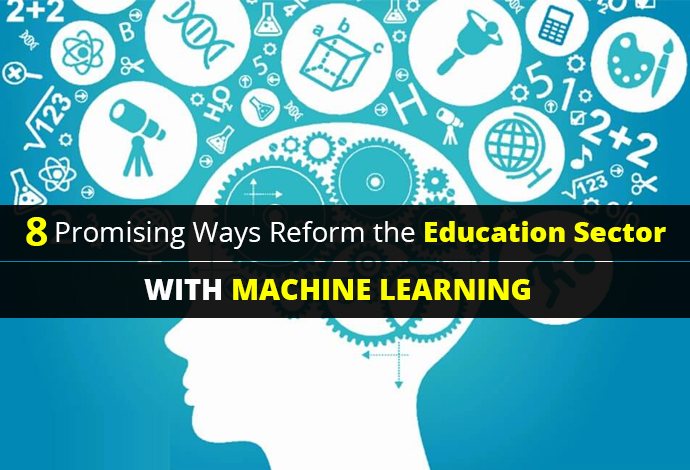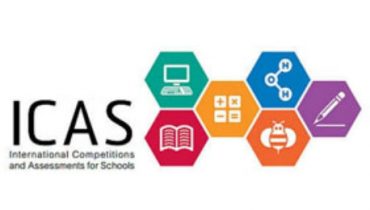
Promising Ways Reform the Education Sector with Machine Learning
People still struggle to believe the fact that machines have the ability to learn. Telling them the machines can revolutionize the whole education sector will be pushing it too far. But sooner or later, they’re going to find out the truth.
Well, machine learning or the science of computer programming to give machines (computing devices) the ability to learn was not introduced yesterday. It has been in the field for quite some time now. If you are wondering whether it can change the whole way education works, yes, it is going to do that too.
If you are worried about machines going rogue and bringing AI apocalypse upon the humankind like “Terminator” or “Westworld,” then you should relax. No matter how convincing those theories sound, they are all part of the human fantasy.
Large companies like Google have already spent years on perfecting their AI system, and we can see how better their features have got over the years – all because of machine learning. Did it ever occur to you that Google is keeping track of your history so that next time you do a search, it can provide you with personalized content? Well, it does exactly that.
A lot has been discussed in the matter of artificial intelligence and machine learning. And it is the time when we include that technology in improving the most significant area of our society – education. We have already witnessed the brilliance of smart classes. Just imagine what AI embedded education system can do.
Well, if you have no clue, don’t worry. This blog will provide you with enough idea of what we are going to see in the near future. Here are 8 promising ways to improve our existing education sector with artificial intelligence and machine learning:
Offering a custom learning experience:
Machine learning works towards helping the educators to determine how well the individual student is learning in the class. Teachers will no longer have to spend extra minutes in the class to deliver the lessons and ensure each one of them has understood the concept properly.
The technology may help the teachers identify which method of teaching is working with a particular student and which is not. This will allow the schools to facilitate a custom learning experience for the students as per their learning needs and also specify how to improve the overall curriculum.
Predicting the obstacles:
It is really unfortunate to see a number of students dropping out of their courses every year. To keep that under control, a number of companies are developing a program that may allow the schools/colleges to predict the performance of the students and their chances of dropping out.
The idea is to analyze the repetitive actions and behaviors of a student to understand if he or she is experiencing some sort of problem. This may allow the school/college to address the particular concern and help the student overcome the situation. Hopefully, this may help reduce the dropout problem most of the institutes have.
Organizing the learning material:
Artificial intelligence has the capability to learn and evaluate things like a human mind but in a more precise way. It will be able to analyze the curriculum and the learning material to make a suggestion on how to organize the content as well as the curriculum to allow the students learn more efficiently.
When it comes to teaching a student, machines can also suggest which concepts go well with which technique. This may help the students learn better as they will be receiving the lessons in a way that they are comfortable with.
Having more accurate grading system:
While grading the papers, even the most mindful teachers make mistakes, which often put them in an embarrassing situation. Also, when there’s an error in the grading, it is the student who suffers most of the time. Artificial intelligence is going to put an end to it.
If the machines start doing the job for the teachers, it will offer error-free unbiased grading of the paper. Some input from the teacher needs to be there, but it will certainly be more appropriate than the conventional way of grading.
Teachers are often are biased towards particular individuals. After all, they are only humans. Besides, their sense of evaluating a paper is often influenced by their own understanding of the subject, their experience, and the circumstances. Machines don’t have that drawback.
Sharing more constructive feedbacks with all:
Machines will be able to suggest where a student needs to work on, once they understand how to analyze and assess the progress a student is making over time. This will also offer some suggestions to teachers that may help them improve their teaching pattern accordingly.
With the help of machine learning, students may also learn which path they need to follow to get better results. In short, this may help the students as well as the teachers to improve their performances according to the requirements.
Suggestion of a better learning model:
Learning is more convenient when there is enough material to refer to on the topic at hand. Machine learning can facilitate the feature for the students by analyzing the existing curriculum. The machine learning enabled programs will be able to identify the gaps in the learning materials and will suggest additional materials to refer to while demonstrating further learning methodology.
In fact, there are enough online platforms like DreamBox and IXL learning that allow the students to learn by offering the adaptive learning as per the needs of the individual on a particular subject. These online platforms are not a part of the classroom routine yet. But they can certainly improve the quality of learning if college and universities introduce them.
Eliminating the student-teacher gap:
Through smart classrooms, students can get in touch with the experts from across the world. However, the implementation of the technology is still in its nascent stage. Machine learning is going to revolutionize the whole matter altogether. Experts are developing programs, which will allow the students to connect with available teachers when they need some help.
No appointments will be required. The system will do the entire work for the students. In fact, the new classrooms are already personalizing the schedule for the students based on their learning capabilities and requirements. Students will no longer need to adapt to the program, but the program will adapt to their needs.
Making education more interesting:
Students are often found complaining how dull their classrooms are. AI and machine learning can add some fun to the scene while offering the lessons. Which are the major focus of the academic curriculum. The AI can help the teachers identify the most effective ways to teach the students.
It is also worth mentioning that the artificial intelligence can accelerate the way a classroom operates. Which means the teachers will have more time to experiment with their approach towards making the lectures more interesting for the students.
A lot of people believe that machine learning is going to put several jobs out of order by introducing automation. In fact, a report by CMO suggests that 16 percent of the jobs in the US will be lost over next ten years as machine learning comes into the play in the respective industries. But that’s only one half of the story.
The report also suggests that over 13.6 million jobs will create in the upcoming years only because of the trend of AI and machine learning. Today, only 15 percent of the businesses are using AI. But the trend is growing in the market at a constant rate. 31 percent of the enterprises reveal that they have included AI and machine learning on their agenda for the next 12 months.
Even if the AI and machine learning become the primary means of teaching and learning. The classrooms will still require teachers who can coordinate with students. Also, it depends a lot on the administration how they want to implement the machine learning in the classrooms.
It will be a challenge to embed technology into the ongoing courses. But it is no longer possible to deny the value machine learning can add to the education sector.
Author bio: John Mark is an academic professional with special expertise in academic writing. He has been working as a paper help expert at Myassignmenthelp.com. Apart from this, he loves blogging.





